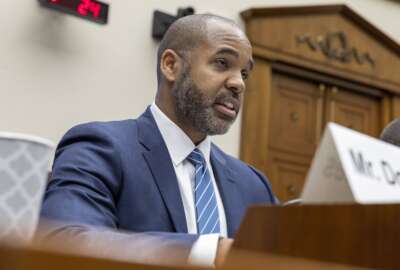Performance management – Judge not, lest ye be judged?
Plain old good manners tell us we shouldn't go around judging people. But in the federal HR world, entire performance rating systems are built around judging...
Commentary by Jeff Neal
Founder of ChiefHRO.com
& Senior Vice President, ICF International
This column was originally published on Jeff Neal’s blog, ChiefHRO.com, and was republished here with permission from the author.

I have to start with a confession. I am an HR person and I intensely dislike most performance review processes I’ve seen in the past 35 years. Almost without exception, they add little value and, in many instances, do great damage. The lack of clarity regarding why the ratings are being done and the disconnect between the organization’s rhetoric regarding itself and how it views people are enough to make any review process risky. Add to that the canyon that lies between our perceptions of ourselves and how others view us, and we have a formula for a destructive exercise that not only fails to add value, but actually does demonstrable harm.
My mother taught me from the time I was a small child that I should not judge other people. She quoted the biblical admonition (Matthew 7:1) to “Judge not, lest ye be judged” and said people who judge others are judged by those same people.
If religion isn’t your thing, just plain old good manners tells us we shouldn’t go around judging people. So how do we make that reality in the HR world?
We set out to not only judge people, but to build entire systems around judging others. We consume countless hours writing standards, asking people to rate themselves, and rating them. We make decisions about employment (do I keep my job), pay raises, bonuses and job assignments. Every HR person I know tells me we do it because we have to. In fact, the federal government is required by law to do it.

If the government and most employers are going to require performance evaluations, we need to do it in a way that makes sense. For any rating process to make sense, it has to take into account one simple, yet very profound fact: Most people are above average. Well, not really, but they are in their own perception of themselves. There has been extensive research on self-perception that finds there is a surprisingly common type of cognitive bias called illusory superiority. That’s a fancy way of saying we think our strengths are greater than they really are and our weaknesses are less than they really are.
Garrison Keillor’s Prairie Home Companion includes the news from Lake Wobegon, “Where all the women are strong, all the men are good looking, and all the children are above average.” The description of Lake Wobegon is funny, but it also describes a very real phenomenon concerning how most people view themselves. What makes it worse is the fact that many of the least capable have the highest opinions of themselves.
More from the Author:
At the Defense Logistics Agency, we did extensive data analysis on our employee surveys and multi-source feedback done on supervisors. We found the bottom 25 percent of supervisors rated themselves at about the same level as the top 25 percent. The direct reports, peers and bosses of these “delusional supervisors” gave them very low ratings. The top 25 percent of supervisors tended to rate themselves lower than their peers, direct reports and bosses rated them.
Imagine the response when you give one of the bottom performers a low rating. They believe they are outstanding. You believe they are anything but. Everyone around them shares your view. That reality drives home the benefit and the peril of performance ratings. Any rating process that assumes people are aware of their shortcomings is likely to fail. Any rating process that assumes everyone is fine with being rated as average or acceptable, or satisfactory, or any other middle-of-the-road descriptor, is destined to fail.
Why did I title this post “Judge Not Lest Ye be Judged?”
One of the big concerns many in government and the private sector have is how leaders are perceived by rank-and-file employees. We design rating processes that tell people their view of themselves is dead wrong. And we are surprised when they don’t praise the process or us?
The next few posts in this series will address how to start the process of designing an evaluation system, how to design one that avoids the problems with the Lake Woebegon Effect, how to implement it, and what to do once you have it in place. I look forward to sharing them and to your comments.
Copyright 2013 by Jeff Neal. All rights reserved.
Jeff Neal is founder of the blog, ChiefHRO.com, and a senior vice president for ICF International, where he leads the Organizational Research, Learning and Performance practice. Before coming to ICF, Neal was the chief human capital officer at the Department of Homeland Security and the chief human resources officer at the Defense Logistics Agency.
Copyright © 2025 Federal News Network. All rights reserved. This website is not intended for users located within the European Economic Area.





